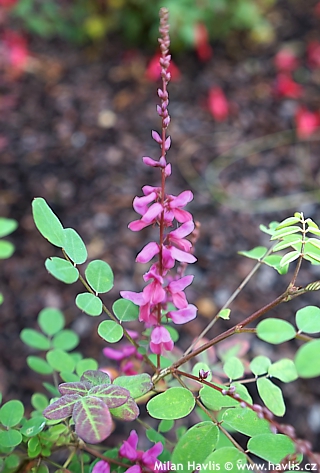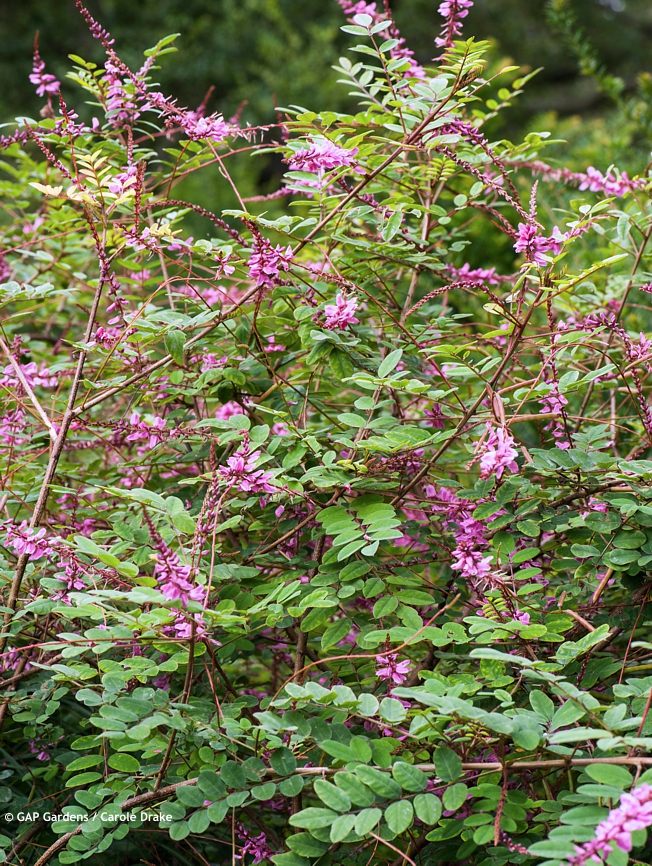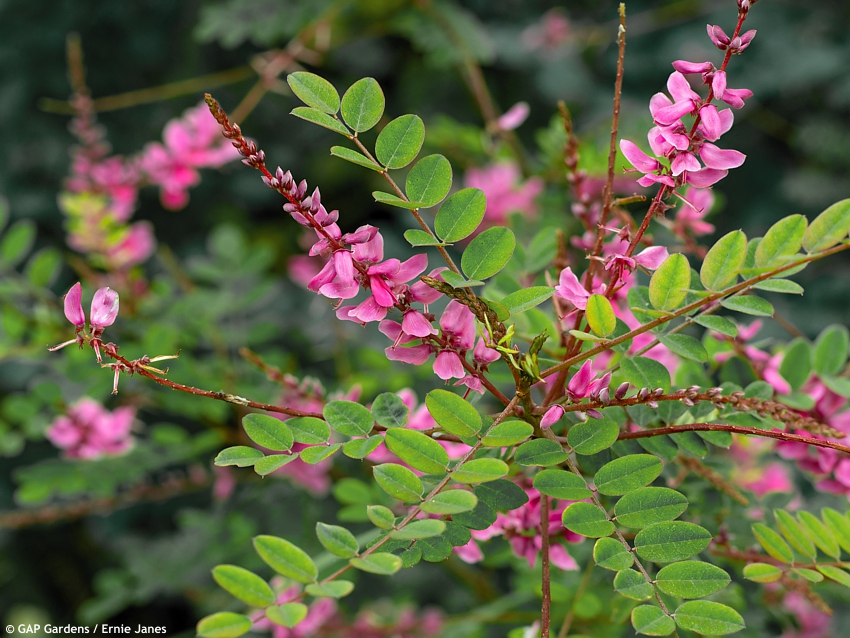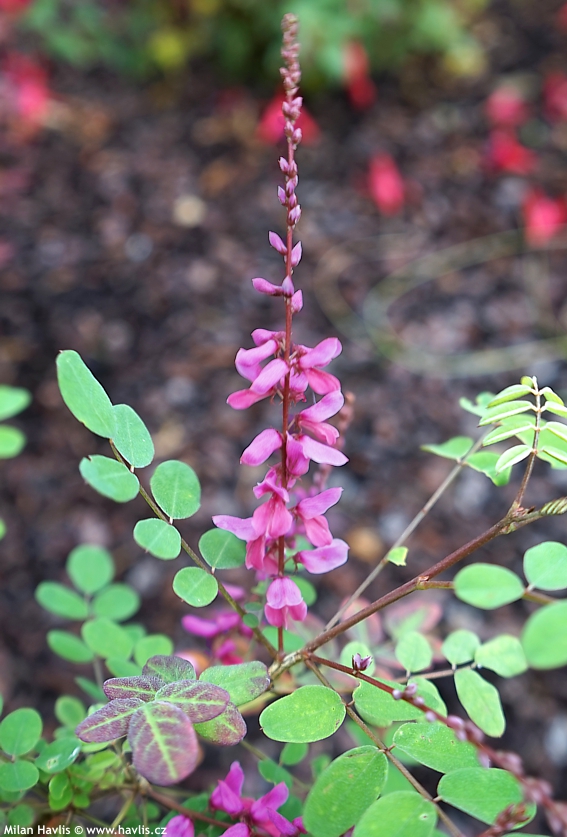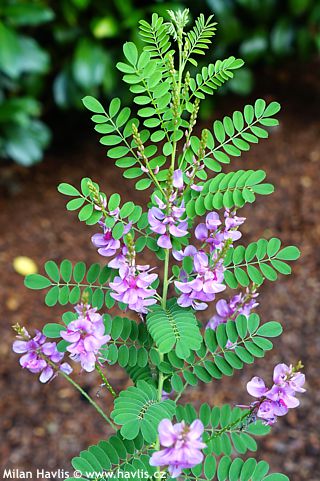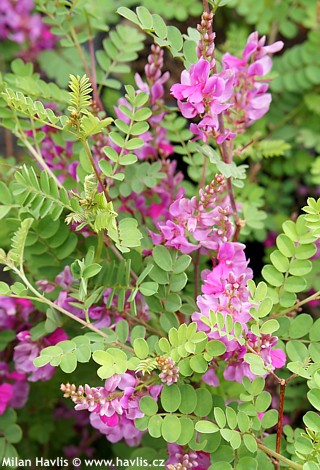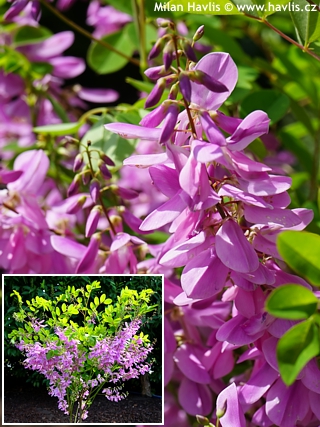Indigofera howellii 'REGINALD CORY' Howell's indigo
Indigofera
Howell's indigo comes from Tibet, southern China and Myanmar (Burma) and is considered to be the longest-flowering indigo species known today. It was first found in the Chinese province of Yunnan in 1895 by a French medicinal missionary Jean-André Soulié, and was named after the botanist Edward Butts Howell (1879-1952), who spent over 30 years in China at the Maritime Customs Office, but spent most of his free time researching its flora. He was fascinated by it, as evidenced by many records, especially letters to his botanical colleagues, equally enthusiastic.
The Indigofera genus includes over 700 species of shrubs and herbs, mostly found in tropical and subtropical regions of Asia, Africa, and the Americas. Its common name refers to the plant’s historical use in producing natural blue dye known as indigo, especially from the African species Indigofera tinctoria. It was cultivated since ancient times in India, Egypt, and China, playing a key role in trade routes between the East and Europe. Indigo was once so valuable it was nicknamed “blue gold,” and the blue colour became a symbol of wealth – seen in textiles, decorative items, and interior design. As with many valuable and precious commodities, it was also associated with exploitation – from slave labour in America to forced farming in colonial India, even leading to mass farmer uprisings.
Reginald Cory is an award-winning indigo variety named after the man of the same name, Reginald Radcliffe Cory (1871-1934), who was one of the eight sponsors of an important collecting expedition to China between 1917-1920 and who, although an amateur gardener, helped build a significant garden complex around the estate in Dyffrny, Wales, which he inherited after his father’s death. The plant first appeared in 1969 at East Bergholt Place in Suffolk, England, where it was grown by Charles C. Elley from cuttings he once received from Reginald Cory without any description. While still called indigofera potaninii, the English Royal Horticultural Society RHS awarded the plant in 2007 the Award of Garden Merit (AGM), and the species was renamed to i. howellii later.
It is usually a fast-growing deciduous shrub of upright and airy habit with small leaves and brightly coloured flowers. Those are small, pea-like, deem magenta purple, and are arranged in very slender racemes 7-23 cm long. They bloom tirelessly from June until late summer or early autumn if it is sunny and warm. Pinnate leaves resemble those of a locust but much smaller and more delicate. They consist of 9-17 small, medium green, oval leaves, which turn crimson, orange, and yellow for a short period in autumn. The plant looks extremely exotic and, thanks to its extended flowering period, will adorn any summer garden.
Indigo is best grown in very fertile, perfectly drained soil in full sun, it hates compacted or water-logged ground. Under good conditions you can expect a lovely, bushy and dense shrub with profusion of flowers, creating a typical atmosphere of its home. For best results it should be cut back every spring to encourage new growths (like buddleja or caryopteris – remove 70-80% of previous year’s growths). Keep it mulched all year as it hates long-lasting drought. Hardy to about -29 °C (USDA zone 5) but is supposed to take a few degrees lower and acts like a perennial if the top is killed by frost, coming back from its roots.
Last update 23-11-2021; 23-08-2025
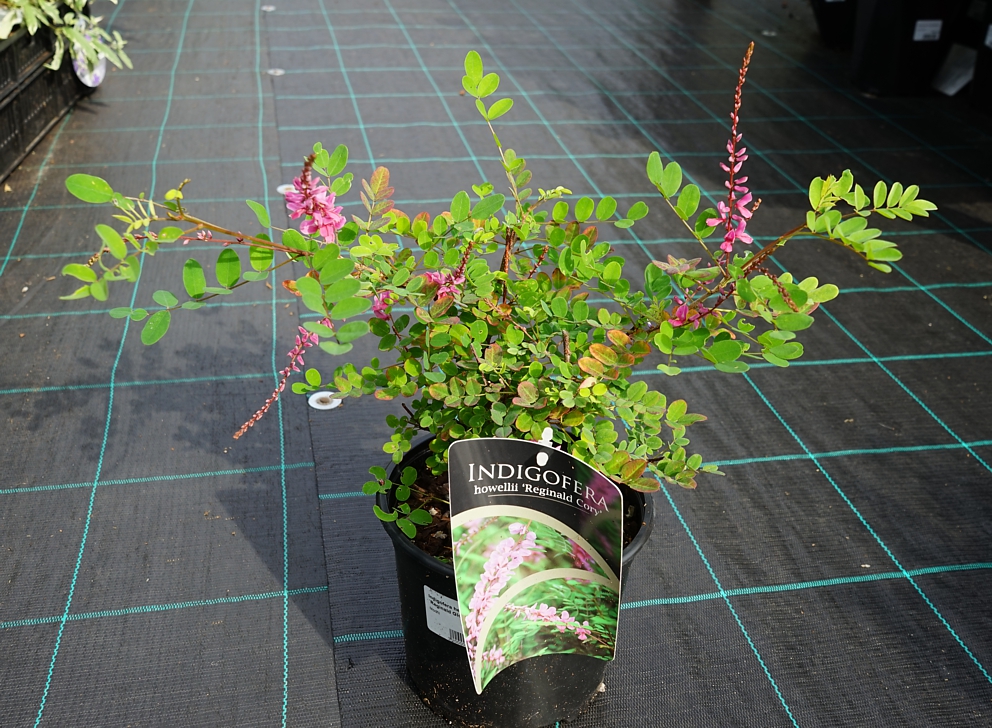
399,5 Kč

399,5 Kč

480,25 Kč
Goods are shipped all over Europe. For Russia and U.K. and for further details please read about SHIPPING OPTIONS HERE.
Are you interested in a serious discount for orders NOV-FEB? Check your options here.
THE PRICES INCLUDE VAT of 15%. For quick conversion you can use 1 CZK = approx. 0.04 EUR
- STANDARD QUALITY - Plants of this group are 1st class quality with number of branches and overall density adequate to their size and age, considering they were container grown.
- DE LUXE QUALITY - This label guarantees a luxurious quality of manually selected plants that, compared to their height and age, are exceptionally dense and beautiful.
- EXTRA - These plants are usually mature and bigger specimens with exceptional overall appearance.
- STANDARD (as described in the plant form) means a tree with a trunk of 190-210 cm and a crown at the top, unless specified differently. The commercial size for trees is their girth measured in the height of 1m from ground.
- HOBBY - These plants are of the same quality as our standard-quality plants but younger and therefore cheaper.
- SHRUB - a woody plant with branches growing bushy from the ground level.
- HALF-STANDARD or MINI-STANDARD - a small tree with shorter trunk, its size is usually specified.
- FEATHERED - These are trees with branches growing already from the base of the trunk and up along the stem.
- GRASSES and PERENNIALS - Sizes given usually read the diameter of the pot or the clump, as specified.

































